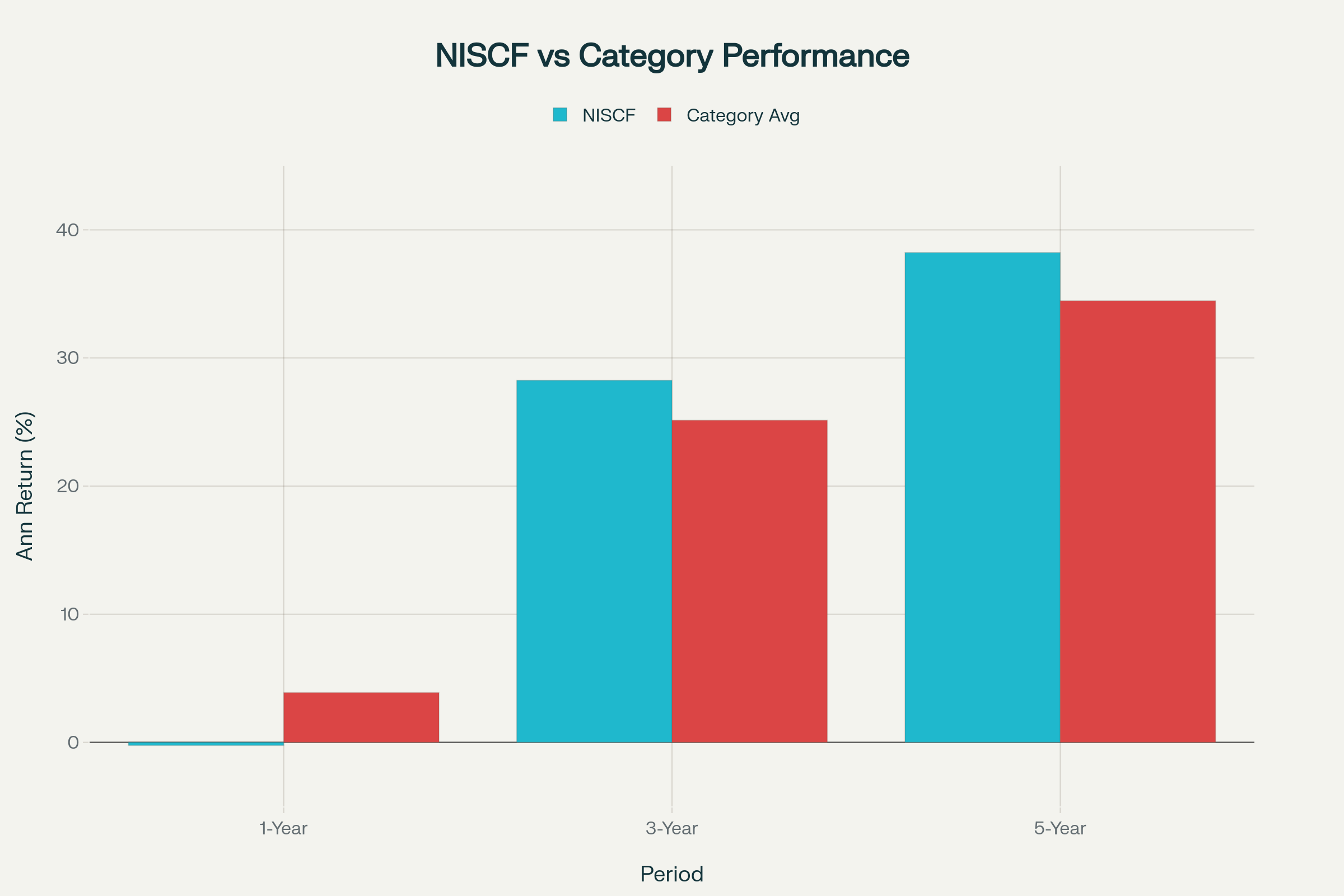Before diving into details, here is the headline takeaway: Nippon India Small Cap Fund Growth combines disciplined stock-picking with the sheer growth potential of India’s small-cap universe, delivering top-quartile long-term returns while charging one of the lowest expense ratios in its category.
Fund Overview
Launched on 1 January 2013, Nippon India Small Cap Fund Direct Growth (NISCF-DG) is an open-ended equity scheme mandated to keep at least 65% of its corpus in companies ranked below the top 250 by market capitalisation. The strategy is helmed by veteran fund manager Samir Rachh, whose tenure since 2017 has seen assets under management (AUM) swell to ₹66,602 crore as of 30 June 2025.
| Metric | Value |
|---|---|
| Current NAV (24 Jul 2025) | ₹194.44 |
| Expense Ratio | 0.64% |
| Exit Load | 1% if units are redeemed within 1 year |
| Riskometer | Very High |
| Benchmark | NIFTY Smallcap 250 TRI |
| Minimum SIP | ₹100 |
The direct-plan structure ensures investors avoid distributor commissions, keeping costs markedly lower than the regular plan’s 1.4% expense ratio.

Logo of Nippon India Mutual Fund with the tagline ‘Wealth sets you free’
Historical Performance
2.1 Return Track-Record
NISCF-DG has weathered multiple market cycles and still posts eye-catching annualised gains of 28.25% over three years and 38.22% over five years, decisively ahead of the category average. One-year performance has turned negative owing to a sharp mid-2024 correction, but longer-tenor numbers underscore the fund’s compounding power.

Performance comparison of Nippon India Small Cap Fund Direct Growth with small-cap category average
Figure 1 – Performance Snapshot versus Small-Cap Category Average (annualised).
2.2 Risk-Adjusted Metrics
Over a five-year window the fund exhibits a Sharpe ratio of 1.37 and standard deviation of 16.63%, broadly in line with peers yet with a slightly lower beta of 0.85, indicating marginally reduced sensitivity to market swings.
Portfolio Composition
3.1 Sector Allocation
The portfolio skews toward industrial plays that benefit from India’s multiyear capex cycle. Capital Goods (17.73%), Financials (11.76%), Services (11.40%) and Healthcare (8.55%) dominate the sectoral mix, providing a balanced blend of domestic consumption and export themes.
3.2 Top Holdings
No single stock exceeds 2.5% of assets, underscoring prudent diversification. The ten largest holdings include Multi Commodity Exchange, HDFC Bank, Kirloskar Brothers and Karur Vysya Bank—small-cap names with scalable business models and improving balance sheets.
| Company | Weight (%) |
|---|---|
| Multi Commodity Exchange | 2.49 |
| HDFC Bank | 2.00 |
| Kirloskar Brothers | 1.58 |
| Karur Vysya Bank | 1.28 |
| Elantas Beck India | 1.24 |
Risk Metrics & Expense Profile
NISCF-DG’s expense ratio of 0.64% is among the lowest in the small-cap space, enhancing net returns. Volatility remains high—small-cap indices lost more than 30% during COVID-19—but the fund clawed back losses within 18 months, reflecting robust underlying earnings growth. Investors should brace for deep drawdowns yet expect outsized gains across a full market cycle of seven years or more.
How Nippon India Small Cap Fund Direct Growth Fits in Your Portfolio
5.1 Investor Suitability
The fund suits aggressive, long-horizon investors who can stomach interim volatility for potential inflation-beating growth. Its diversified basket of over 250 stocks dilutes idiosyncratic risk while capturing early-stage winners likely to graduate into future mid-caps.

Illustration of financial growth showing a person watering a money plant with rising investment charts and golden coins around
5.2 SIP vs Lumpsum
Deploying capital via a Systematic Investment Plan mitigates timing risk and leverages rupee-cost averaging in a notoriously volatile segment. Historical data show that a ₹10,000 monthly SIP since launch would be worth over ₹17.8 lakh by mid-2025, translating to a multibagger 25.7% CAGR.
Taxation & Exit Load
- Short-Term Capital Gains (≤ 1 year): taxed at 20%
- Long-Term Capital Gains (> 1 year): 12.5% on gains exceeding ₹1.25 lakh in a financial year
- Exit Load: 1% if redeemed within 365 days; nil thereafter
Steps to Invest
- KYC Compliance: Complete PAN-based KYC through a registered intermediary.
- Choose Platform: Invest directly via Nippon India MF website or through fintechs such as Groww or Paytm Money for an entirely paperless journey.
- Select Plan & Amount: Opt for the Direct-Growth option, set SIP date, and mandate auto-debit.
- Monitor Quarterly: Review allocation drift, but avoid knee-jerk exits during corrections—small-cap wealth creation demands patience.
Conclusion
Nippon India Small Cap Fund Direct Growth presents a compelling gateway to India’s burgeoning entrepreneurial ecosystem. Its seasoned management, low costs, and diversified portfolio position investors to harness the structural growth of smaller companies, provided they accept elevated volatility and maintain a multi-year horizon. Pairing the fund with steadier large-cap or debt allocations can further smooth the ride while preserving upside potential.
Invest early, invest systematically, and let the power of compounding do the heavy lifting. Over time, the Nippon India Small Cap Fund Direct Growth can be a formidable engine of long-term wealth creation for informed, disciplined investors.

